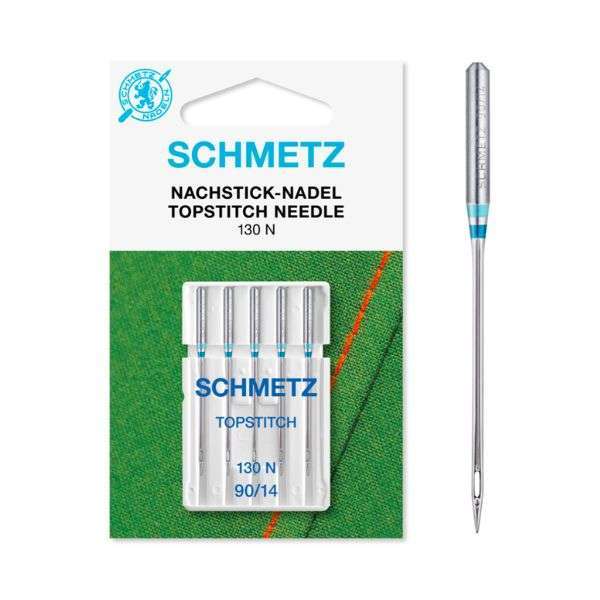What Needle Size for Acrylic and Crepe Cloth?
Introduction
Fabric compatibility is crucial in fashion and sewing, ensuring that garments are not only visually appealing but also functional and durable. When it comes to mixing fabrics like acrylic and crepe, understanding their compatibility can lead to successful sewing projects. In this article, we will explore the compatibility of acrylic and crepe fabrics, their properties, and provide practical sewing tips.
Compatibility Analysis
Yes, acrylic and crepe can be mixed together. The combination works well due to their complementary properties. Acrylic is a synthetic fiber known for its warmth and durability, while crepe, often made from silk, wool, or synthetic fibers, is valued for its distinctive crinkled texture and excellent drape. These fabrics can be paired effectively as they balance each other’s strengths and weaknesses.
- Texture and Weight: Acrylic’s smoothness contrasts nicely with crepe’s textured surface, adding visual interest. Crepe’s lightweight nature complements acrylic’s bulkiness, creating a balanced garment.
- Stretch and Care: Both fabrics can have varying degrees of stretch, depending on their specific blend. They generally require gentle care, though acrylic can be more tolerant of machine washing.
- Durability: Acrylic offers excellent wear resistance, while crepe provides a luxurious feel, making the combination both practical and stylish.
Fabric Properties Comparison Table
| Property | Acrylic | Crepe |
|---|---|---|
| Fiber Content | Synthetic | Natural/Synthetic |
| Weight and Thickness | Medium to Heavy | Light to Medium |
| Breathability | Moderate | High |
| Stretch and Elasticity | Limited | Varies (some stretch) |
| Wrinkle Resistance | High | Moderate |
| Care Instructions | Machine wash, low heat dry | Hand wash, low iron |
| Durability | High | Moderate |
Benefits of Mixing These Fabrics
Combining acrylic and crepe can enhance the final product in several ways:
- Texture and Visual Interest: The contrast between acrylic’s smoothness and crepe’s crinkled texture creates a visually appealing garment.
- Comfort and Performance: Acrylic provides warmth, while crepe offers breathability, making for a comfortable wear in various climates.
- Drape and Movement: Crepe’s fluid drape complements acrylic’s structure, resulting in garments that move beautifully.
- Cost-Effectiveness: Acrylic is generally affordable, making it a cost-effective choice when paired with pricier crepe.
- Seasonal Versatility: The combination is suitable for both warm and cool weather, depending on the specific garment design.
- Design Possibilities: This blend opens up creative opportunities in both fashion and home decor, allowing for unique textures and styles.
Potential Challenges
While there are many benefits, mixing acrylic and crepe can present challenges:
- Different Shrinkage Rates: Test fabric swatches before cutting to ensure compatibility.
- Conflicting Care Requirements: Opt for the gentler care method to prevent damage.
- Texture Clash or Pilling: Use a fabric shaver to manage pilling on acrylic.
- Seam Puckering: Use appropriate needle size and tension settings to avoid puckering.
- Color Bleeding or Fading: Pre-wash fabrics separately to check for colorfastness.
Sewing & Styling Tips
- Needle and Thread Recommendations: Use a universal needle size 70/10 or 80/12 for best results. Polyester thread works well for both fabrics.
- Interfacing and Stabilizer Needs: Lightweight interfacing can help stabilize crepe without adding bulk.
- Seam Finishing Methods: French seams or overlocking prevent fraying and ensure a clean finish.
- Pattern Selection Advice: Choose patterns that highlight crepe’s drape and acrylic’s structure, such as blouses or skirts.
- Styling Ideas: Pair acrylic-crepe garments with simple accessories to let the fabric’s texture shine in both fashion and home decor.
Care & Maintenance Guide
- Washing Instructions: Hand wash crepe and machine wash acrylic on a gentle cycle; use cold water.
- Drying Recommendations: Air dry both fabrics to maintain their integrity.
- Ironing and Steaming Tips: Use a low heat setting for both fabrics, and consider steaming crepe to maintain its texture.
- Stain Removal: Treat stains promptly with mild detergent and cold water.
- Long-Term Care: Store garments properly to prevent stretching or distortion.
FAQ Section
-
Can you wash acrylic and crepe together?
- It’s best to wash them separately to prevent damage to the crepe.
-
Will acrylic shrink more than crepe?
- Acrylic is less prone to shrinkage compared to crepe, but always pre-wash fabrics.
-
What needle size should I use for sewing these fabrics together?
- A universal needle size 70/10 or 80/12 is recommended.
-
Can you mix acrylic and crepe in one garment?
- Yes, they can be mixed to create garments with unique textures and drape.
-
How do you prevent seam puckering when combining these fabrics?
- Adjust your sewing machine’s tension settings and use the right needle size.
-
Is it okay to mix acrylic and crepe for upholstery?
- While possible, consider the durability and care needs of each fabric.
-
What’s the best way to finish seams with these fabrics?
- French seams or overlocking are effective for a neat finish.


Leave a Reply